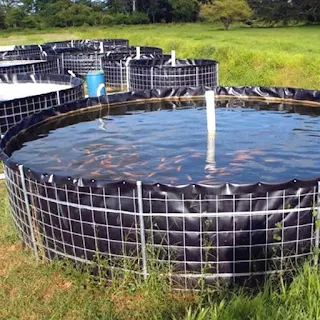Biofloc Fish Farming: A Sustainable Aquaculture Practice
Fish farming, also known as aquaculture, is the practice of raising fish in tanks, ponds or other controlled environments for consumption.
With the growing demand for seafood and declining wild fish populations, aquaculture has become an increasingly important source of protein worldwide.
However, traditional methods of fish farming have been associated with environmental degradation, disease outbreaks and high operating costs. In recent years, a new method of fish farming called biofloc technology (BFT) has gained popularity due to its many benefits.
What is Biofloc Technology?
Biofloc technology is a sustainable and cost-effective method of aquaculture that involves culturing fish in tanks with little or no water exchange.
The system relies on microorganisms such as bacteria, algae, fungi and protozoa to convert organic matter into protein-rich feed for the fish.
The microorganisms form aggregates known as bioflocs which provide a nutritious food source for the fish while also improving water quality.
How Does Biofloc Technology Work?
In a biofloc system, fish are raised in tanks or ponds with a high stocking density. The tanks are filled with water and a carbon source such as molasses or corn starch is added to promote the growth of microorganisms.
The microorganisms use the carbon source to metabolize organic matter such as uneaten feed, feces and dead fish, converting it into protein-rich biomass. The biomass forms aggregates known as bioflocs which serve as a food source for the fish.
The biofloc system relies on a balance between nutrients and dissolved oxygen levels. As the microorganisms grow, they consume oxygen which can lead to hypoxia if not properly managed. To prevent this, aeration systems are used to maintain dissolved oxygen levels within the tank.
Benefits of Biofloc Technology
Here are some of the benefits of biofloc technology:
Improved Water Quality
Biofloc technology is designed to eliminate the need for water exchange, which reduces the risk of disease transmission and environmental pollution. The microorganisms in the system help to break down organic matter, thereby improving water quality and reducing the build-up of toxic compounds.
High Stocking Density
Biofloc technology allows for a high stocking density, meaning more fish can be raised in a smaller area. This results in increased productivity and higher profits.
Reduced Feed Costs
The microorganisms in the biofloc system provide a significant portion of the fish's diet, reducing the need for expensive commercial feed. This lowers operating costs and makes the system more affordable for small-scale farmers.
Sustainable
Biofloc technology is considered a sustainable method of aquaculture because it does not rely on wild-caught fish for feed or require extensive water resources for water exchange. It also produces less waste than traditional methods of fish farming.
Disease Control
Biofloc technology reduces the risk of disease outbreaks because the closed system prevents the entry of pathogens and parasites from outside sources.
Challenges of Biofloc Technology
While biofloc technology offers many benefits, there are also some challenges associated with its implementation:
- Management requirements: Biofloc systems require careful management of water quality, dissolved oxygen levels, and nutrient balance to ensure optimal conditions for fish growth.
- Initial investment: Setting up a biofloc system requires a significant initial investment in infrastructure and equipment such as tanks, aeration systems, and pumps.
- Technical expertise: Biofloc technology requires technical expertise in microbiology, water chemistry, and fish husbandry, which may be challenging for new farmers.
- Risk of failure: If not properly managed, biofloc systems can experience a buildup of toxic compounds and bacterial infections that can lead to mass mortality events.
Biofloc technology is a sustainable and cost-effective method of aquaculture that offers many benefits over traditional methods. It provides a high stocking density, reduced feed costs, improved water quality, and disease control.
However, it requires careful management and technical expertise to ensure optimal conditions for fish growth. As demand for seafood continues to increase, biofloc technology has the potential to play an important role in meeting this demand while reducing the environmental impact of aquaculture.
 Reviewed by Tanmoy Roy
on
June 03, 2023
Rating:
Reviewed by Tanmoy Roy
on
June 03, 2023
Rating:


Post a Comment